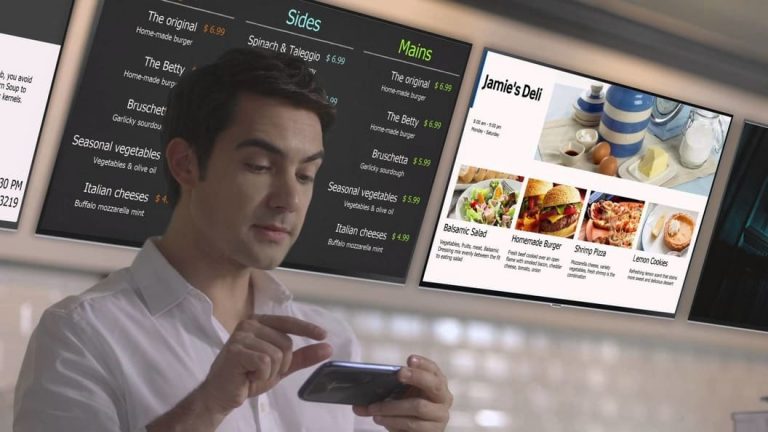Are there differences between Digital Signage media players? Yes, they come in different configurations and sizes. There is a huge variety of players and they differ in price, processing power, outputs, size, and operating systems. To add to this, there are huge differences between the entry-level models, the well-equipped models, and the top end media players.
AV integrators and Digital Signage professionals are aware that selecting the right media player really comes down to the content it would playback. Understanding what content will be displayed currently and in the future is key to deciding which digital signage player will work best. Here, we look at digital signage media players along with tips on choosing one for your business.
A look at Digital Signage Media Players
A media player is essentially a regular computer just like the ones found in offices or homes. They feature a mainboard, processor, memory, interface connectors, hard drive, and usually require an operating system. However, the difference is size. Most digital signage media players use a small form factor (SFF) footprint. This lightweight and small footprint are ideal for digital signage as the player is typically mounted behind the display, to the wall, or in the ceiling.
Digital signage players or media players can deliver content to a basic single screen static menu board with text and some images. Advanced models support the complex dual-screen setup with scrolling text, live video feeds, animation, and interactive widgets. The more you want to display, the more processing power will be needed to view crisp, clean images without being jittery/laggy.

Apart from the content, another key question is where will that content be stored– locally or in the cloud. Some signage software or content management systems (CMS) as they are popularly known operate with content stored on the local hard drive of the player. To use a cloud-based CMS requires an active Internet connection and streams the content over the Internet. The option will be determined by the digital signage software selected. Both have pros and cons, which is a whole different topic. A player recommendation can be made only after determining the content requirements.
Entry-level Digital Signage Media Player:

An entry-level player usually consists of a lower power and lower cost Intel Atom or Celeron processor usually with either 2GB to 4GB of memory. A smaller SSD hard drive, WiFi and Linux or Windows OS completes the configuration. These players are a great recommendation for simple applications such as menu boards, directories and other displays with a lighter content load.
Mid-level Digital Signage Media Player:
One of the more popular selling Digital Signage media player configurations is equipped usually with an Intel i3 processor, 4GB of memory, 120GB SSD drive, and Windows Embedded or Windows Professional. This popular configuration can support a wide array of content including videos and scrolling text. It is always smart to recommend that they have some extra processing power under the hood in the event there is a need to enhance or upgrade content capability. Quite often, a less expensive option is purchased and after the end user gets more comfortable with creating content, or seeing what the CMS is capable of, they realize the player is not capable of properly displaying what they created.
High-end Digital Signage Media Player:
These are more expensive Digital Signage media players with faster processors, more memory and multiple outputs can handle pretty much anything you throw at them. They are usually configured with an i5 processor and 8GB of memory featuring the latest Intel HD onboard graphics, or a dedicated graphics card. They often power more than one display and you can showcase content across multiple screens with a single player. These players are an excellent recommendation for video walls. If the project requires displaying multiple videos in different zones, scrolling text, and interactive widgets a high-end Digital Signage media player may be required.
Final notes
Before you choose any Digital Signage media player for a project, it is crucial to know what content you want to display – now and in the future. It is important to know that an entry-level media player may not be able to display heavy videos and scrolling text smoothly. On the other end of the spectrum, a high-end media player may not be required for simpler applications such as menu board at a small restaurant or building directory in that will have nothing but text and images. Research and recommend the player that checks all the boxes. Once the first player is up and running, you can easily add or upgrade the system based on your future requirements.
For more information on digital signage media players for your business in India,
Contact Actis at 022-30808080 or at contact@actis.co.in.


